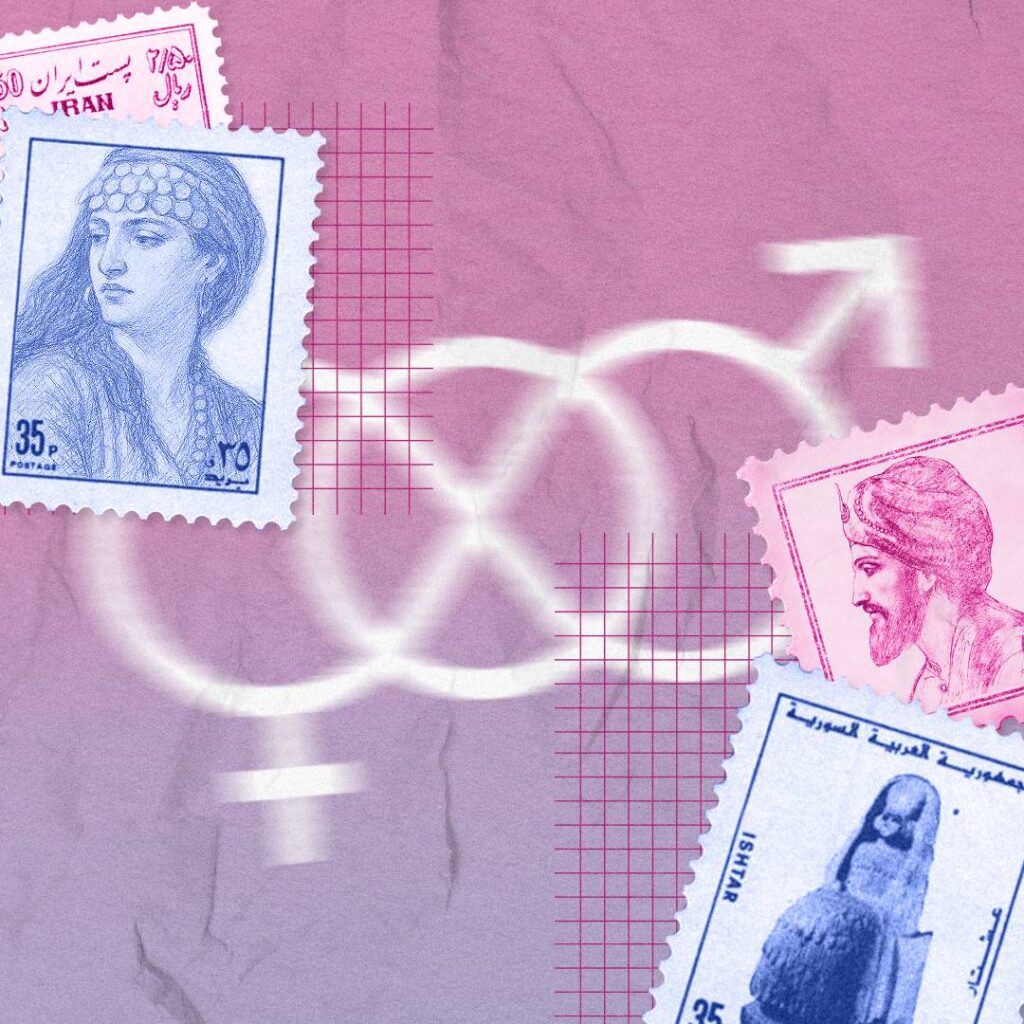Do you think bisexuality began with its emergence as a term in the nineteenth century? Or is it simply a phenomenon born of the internet and social media?
In fact, history is replete with figures who have shown affection for both genders… from the oldest kings on Earth to the Umayyad court!
In this report, we celebrate Bisexual Visibility Day, not only in Syria, but worldwide. Through it, we briefly review outstanding figures in ancient human history who are believed to have demonstrated feelings and affection for both genders. This history, in which we, as Syrians, are a milestone!
outstanding historical figures who demonstrated bisexual tendencies:
– Al-Mu’tamid ibn Abbad, the last king of the Taifas of Seville:
Despite the fame that surrounded the intense love story between Al-Mu’tamid ibn Abbad and his wife, Itimad al-Rumaykiyya, the Andalusian king Al-Mu’tamid ibn Abbad may be viewed, through poetic verses exchanged with the famous poet Ibn Ammar, as bisexual. However, this has never been settled for historians and researchers.
In his book Qala’id al-‘Uqayyan and Mahasin al-‘Ayan, Ibn Khaqan compiles written correspondence between Ibn Ammar and King al-Mu’tamid. Despite the intense disagreement between the two figures that later arose after al-Mu’tamid’s marriage, Ibn Ammar’s childhood friend held several positions during al-Mu’tamid’s ruling period:
Al-Mu’tamid:
They say, “Patience, there is no way to patience… I will weep and weep for the rest of my life.”
Ibn Ammar:
As for your love, we have not deviated from its source… drinking, though it quenches our thirst, it makes us thirsty.
Al-Mu’tamid:
And lightning flashed brightly until it seemed to kindle the burning embers of my heart.
Ibn Ammar:
The horizon of beauty, of which you are a star, has not faded… We asked about it, but we did not abandon it.
– The famous Umayyad princess and poet, Wallada bint al-Mustakfi:
The same ambiguity surrounding al-Mu’tamid ibn Abbad’s gender identity and the possibility that he was bisexual is also true of the famous poet Wallada bint al-Mustakfi, who never made the decision to marry due to numerous offers. She is famous for her intense love story with the renowned poet Ibn Zaydun. However, her long friendship with the made girl, Muhja, has led some researchers to hesitate in determining whether Wallada bint al-Mustakfi was heterosexual or bisexual. It has been said that they exchanged many love poems and romantic poetry.
– Alexander the Great:
The book “The Mask of Command,” which delves into Alexander’s military life, reveals the deep relationship he had with his cavalry commander, Hephaestion. They had been friends since childhood and always shared everything. When Hephaestion died, Alexander wept for days and held a solemn funeral for him.
– The ruler of the Ghaznavid dynasty, Mahmud of Ghazni:
One of the most well-known stories of the ruler of the Ghaznavid dynasty in eastern Iran during the Abbasid period, Mahmud of Ghazni, was the romantic and passionate relationship he had with one of his servants, Malik Ayaz, which became a major part of Ghazni’s biography.
– Gilgamesh:
The Sumerian epic poem Gilgamesh, considered the oldest literary text in the world, tells the story of a king’s quest for immortality. It opens the door to various interpretations of the nature of the relationship between Gilgamesh and his friend Enkidu, which has been described as romantic.
It is worth noting that societies in our region have traditionally been more tolerant and open to issues of sex and gender diversity. In Syria, for example, studies indicate that current gender-discriminatory laws are based on legal frameworks established by the French mandate.

